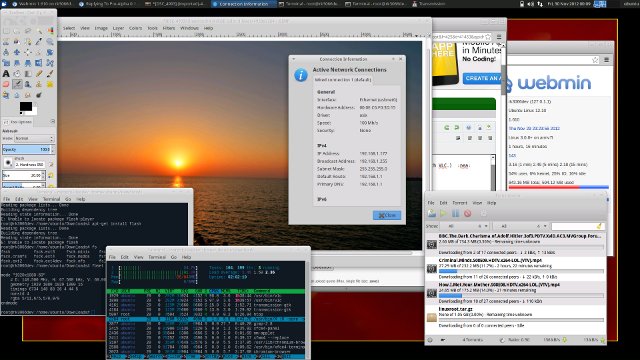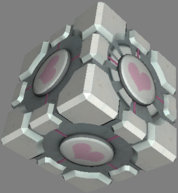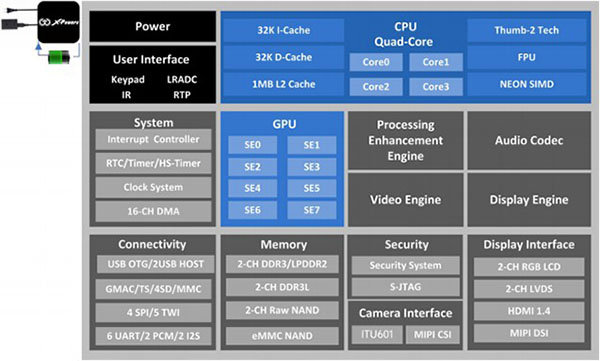As I previously wrote, FOSDEM organizers are slowly uploading FOSDEM 2013 videos. One of the most interesting talk “Open ARM GPU Drivers” is now available. I’ve also uploaded it to YouTube (embedded below) to give it more exposure. Luc Verhaegen has also written a recent blog post entitled “Hey ARM!” where he announces the release of the modified source for Quake 3 Arena demo, and asks ARM to join them in making an open source driver. Open ARM GPU Drivers @ FOSDEM2013 This session covers the following key points: Problem – Binary drivers are mainly designed to run in Android, and it’s very difficult to have proper GPU drivers for Linux, and companies are not interested to release open source drivers or even just documentation, as they are not convinced it will benefit them in any way. Legal – This is actually the main issue, as open sourcing existing driver […]
Quake 3 Arena Demo Using Lima Driver is (Slightly) Faster than Mali-400 Binary Driver
As mentioned previously, Luc Verhaegen was to give a talk about the status of Lima driver (reverse-engineered Mali-200/400 GPU driver), as well as other GPU open source implementation, at FOSDEM 2013. This is now done, and part of the talk included a demo of Quake 3 Arena (q3a timedemo) running on tablet featuring AllWinner A10 SoC (Cortex A8 @ 1Ghz, Mali-400MP1 GPU @ 320 Mhz, and DDR3 memory @ 360MHz), and a 1024×600 LCD. The fact it works is already a great achievement in itself, but this demo runs at 47.2fps with Lima driver (limare), whereas it can be rendered at 46.2fps using the binary driver. In his blog, Luc also explains that apart from being 2% faster, it also uses 3% less cpu than the binary driver! Take that binary blobs! There’s still more work to do however, as this Quake 3 Arena port is not playable yet for 2 […]
A Selection of FOSDEM 2013 Events
FOSDEM is a 2-day (or 3 if you include Friday beer event) event where over 5,000 members of open source communities meet, share ideas and collaborate. It’s free to attend, and there’s no registration, so you just show up to attend. FOSDEM 2013 takes place on Feb 2-3 (yep, this week-end) in Brussels There are 7 main tracks where sessions are organized: Operating systems Open source challenges Security Janson Beyond operating systems Web development Miscellaneous Robotics There are also keynotes and devroom for a total of 488 sessions. Developers rooms that may particularly be of interest to readers of this blog are: Cross Desktop devroom – e.g. Wayland, gstreamer, razor-qt, Qt Project, Plasma Active, etc… Cross Distro devroom – e.g. Linux on Android, suse on ARM, ARMv8, systemd, etc… Embedded and mobile devroom – e.g. Baserock Embedded Linux, Guacamayo (Yocto), Nemo Mobile/ Mer project, arduino… All in all that’s a […]
PicUntu – Rockchip RK3066 Linux Distribution for mini PCs (UG802, MK808, …)
Many people are using RK3066 mini PCs because they currently offer the best performance to cost ratio, but until now they were mainly limited to Android Jelly Bean, although there was some preliminary port of Ubuntu available for the devices. Now, this preliminary port has become a specific Linux distribution for Rockchip RK3066 PCs-on-a-stick called PicUntu, which is based on Ubuntu 12.10, and can optionally support Xfce or Gnome desktop environments. This distribution is known to work on UG802 and MK808, but should also work on some other RK3066 mini PCs such as iMito MX1. The latest version is Picuntu 0.9 RC 2.2, and features such as WiFi, Ethernet, HDMI audio, USB webcam are known to work, What you won’t get, however, is hardware video decoding and GPU support since Rockchip does not provide the relevant binary files for Linux, but this does not seem to stop the developers from […]
GPUs Comparison: ARM Mali vs Vivante GCxxx vs PowerVR SGX vs Nvidia Geforce ULP
I’m always very confused when it comes to comparing GPUs in different SoCs, and I could not really find comparisons on the web, so I’m going to give it a try even though, as you’re going to find out, it’s actually quite a challenge. There are mainly 4 companies that provide GPUs: ARM, Imagination Technologies, Vivante and Nvidia. [Update: Two comments mentioned Qualcomm Adreno and Broadcom VideoCore are missing from the list. Maybe I’ll do an update later]. Each company offers many different versions and flavors of their GPU as summarized below. ARM Imagination Technologies Vivante Nvidia Mali-400 Series: Mali-400 MP Mali-450 MP Mali-600 Series Mali-T604 Mali-T624 Mali-T628 Mali-T658 Mali-T678 PowerVR SGX Series 5: SGX520 SGX530 SGX531 SGX535 SGX540 SGX545 PowerVR SGX Series 5XT: SGX543MP1-16 SGX544MP1-16 SGX554MP1-16 PowerVR SGX Series 6: G6200 G6230 G6400 G6430 G6600 2D graphics: GC300 GC350 3D graphics: GC400 GC800 GC1000 GC2000 GC4000 ULP GeForce (Tegra […]
Modular Graphics on Embedded ARM – ELCE 2012
Philipp Zabel, kernel developer at Pengutronix, discusses about graphics and video support for Linux on embedded SoCs at Embedded Linux Conference Europe 2012. Abstract: Porting Linux to new ARM based application processors has recently become easier than ever: the kernel gained many new frameworks like common-clock, oftree and pinmux. However, things get complicated when it comes to high end embedded graphics units.Those graphics systems tend to be composed of a multitude of on-SoC functional blocks that can operate on shared graphics buffers and video signals, as well as off-SoC encoder/converter chips that can be mixed and matched with any SoC.The old framebuffer is certainly not enough for today’s hardware any more, while modern frameworks like KMS and DRM have their own hassles on non-PC style graphics systems.The talk outlines issues we found while working on graphics and video support for the MX53 and MX6 CPUs and gives suggestions for possible […]
Etnaviv Project Vivante GCxxx GPU Open Source Driver
You have most probably heard of Lima, an initiative to provide fully open source Mali-200 & Mali-400 drivers by reverse-engineering the closed source Mali GPU drivers. A separate effort, Etnaviv Project, has now started to offer open source drivers for Vivante GCxxx GPU used in SoC such as Marvell Armada 1500 (notably used in mainly Google TV platforms), Rockchip RK2918 (present in many older tablets), Freescale i.MX6 (used in newer tablets, low cost development boards, some SoMs and GK802/Hi802 mini PCs). The project is called Etnaviv. The introduction of Etnaviv Project reads as follows on the corresponding Github account: Project Etnaviv is an attempt to make an open source user-space driver for the Vivante GCxxx series of embedded GPUs. The current state of the project is experimental. It is currently only of use to developers interested in helping develop open source drivers for the hardware, reverse engineering, or in interfacing […]
AllWinner Publishes A31 and A20 Processors Details
Several tablets based on AllWinner A31 quad core processor have been announced this week, such as Onda V972, but we did not really have full details on the processor. We now know more since AllWinner added product pages for two new (sun6i architecture. [Edit: A20 is actually sun7i…]) processors: AllWinner A31 and AllWinner A20. AllWinner A31 Specifications AllWinner A31 is a quad core Cortex A7 processor with PowerVR SGX544MP2 GPU (8 shader engines). CPU – ARM Cortex-A7 Quad-Core with 256KB L1-Cache/1MB L2-Cache GPU – POWER VR SGX 544 with Eight logic cores. Open GL ES2.0, Open CL1.x and DX 9_3 compliant. Memory – Dual-Channel LPDDR2/DDR3/DDR3L Controller, Dual-Channel NAND FLASH Controller and 64-bit ECC Video UHD H.264 4K ×2K @30fps video decoding Full HD video decoding BD Directory, BD ISO and BD m2ts video decoding H.264 High Profile 1080P@60fps encoding 3840×1080@30fps 3D decoding Complies with RTSP, HTTP, HLS, RTMP, MMS streaming […]









